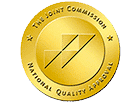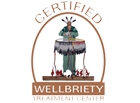Addiction and drug overdose is a major public health problem, with preliminary data released by the Centers for Disease Control and Prevention (CDC) showing 72,000 overdose deaths last year. Of these deaths, over half involved opioids or synthetic opioids. The opioid crisis takes the lives of over 115 Americans every day (CDC).
The annual cost to the U.S. from misusing prescription or illegal drugs or alcohol is $442 billion, as of 2015; the National Institute of Health has found that substance abuse costs America over $600 billion in treatment, criminal/incarceration, and healthcare costs, never mind the social impact of addiction. Current estimates vary but put the cost at somewhere between $600 to upwards of $800 billion.
Interestingly, a 2011 report from the U.S. Department of Justice found that the cost of treatment accounts for just six percent of the total costs associated the use of illegal drugs. Over half of costs were linked to criminal justice/incarceration. The National Drug Intelligence Center has estimated these annual costs to be more than $50 billion.
The 2015 National Survey on Drug Use and Health found that just ten percent of people with a substance use disorder received treatment, but studies have shown that drug addiction treatment reduces not only drug use, but also associated health and social costs.
What are other/social costs of addiction?
Drug or alcohol addiction is one of the most stigmatized health disorders in the country, with many who do not understand that addiction is a disease blaming those with a substance use disorder for their choices or labeling them as criminals. Stigmas can also make obtaining employment difficult and put strain on both professional and personal relationships. In 2014, nearly 22 million Americans aged 12 and older had a substance use disorder within the last year, but few actually received the needed treatment.
Substance abuse can also facilitate the spread of contagious blood diseases like HIV and hepatitis C. Homelessness is another issue that is closely tied to substance use, with over 45 percent of people living in shelters or on the street in a given night reporting chronic substance abuse (according to a study by the Department of Housing and Urban Development).
Why does the “treatment gap” exist?
In the same way that communities with an absence of parental planning education and resources see higher rates of pregnancy, a lack of access, education, and affordability can inhibit people with substance abuse issues from seeking and receiving the treatment that they need. Stigma surrounding substance abuse and the fear of being stereotyped may discourage people from seeking treatment.
How can you fight addiction stigma in the community?
- Listen without judgment and avoid passing it
- Understand and explain that addiction is a brain disease with relapse rates comparable to that of diabetes
- Ask questions without placing blame
- Offer support and be there when you can
There are numerous costs associated with substance abuse, but many of these costs can be reduced with expanded treatment options and resources. Policymakers, health care providers, doctors, public health groups, and communities must work together to spread awareness, break down stigmas, and create relationships to bring about change.
A holistic approach to addiction treatment
Royal Life Centers is a network of full-service drug and alcohol medical detox, residential inpatient, and outpatient treatment centers. We treat dependence on alcohol, benzodiazepines, cocaine, methamphetamine, and opioids through a holistic approach to addiction treatment that targets mind, body, and spirit. If you or a loved one has a substance use disorder and is ready to begin a life free of addiction, please reach out to us at (877)-RECOVERY for help. Our admissions team is available 24/7 to answer any questions you may have about your treatment options.




